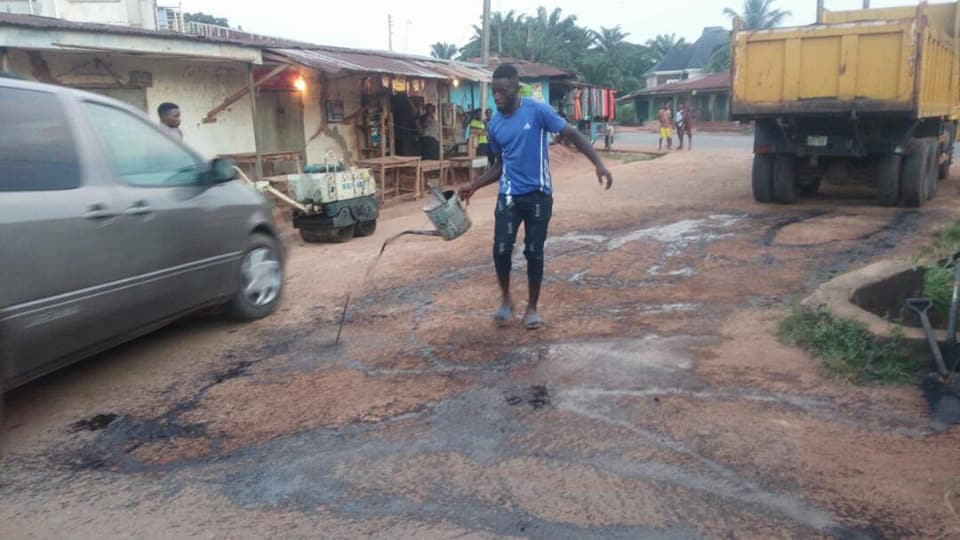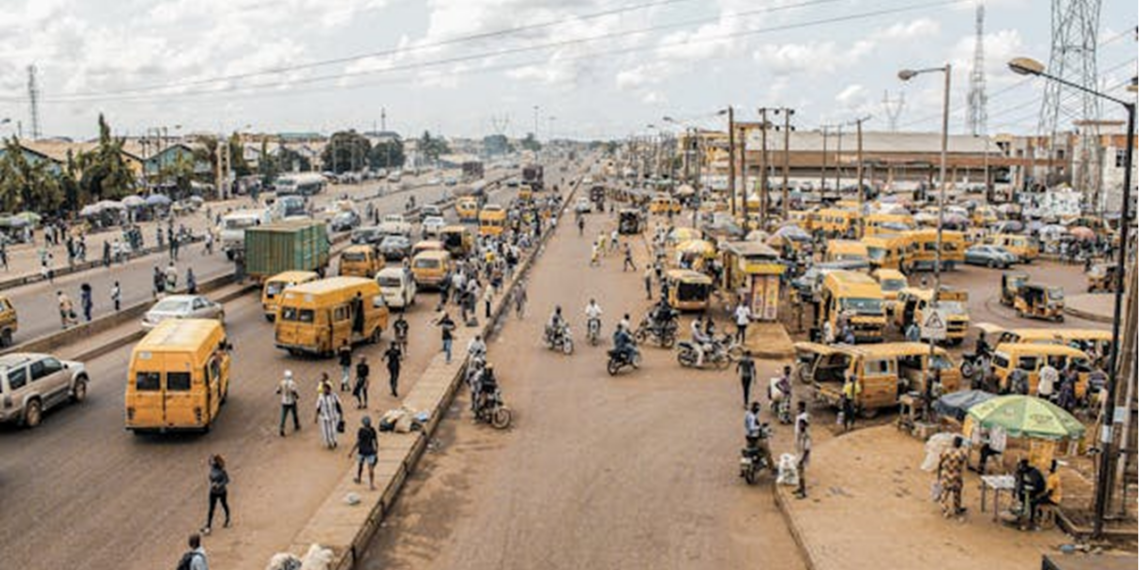While I resided in Lagos, I lived in Lekki for quite some years. The amount of time I spent in traffic was outrageous.
I had to keep calculating possible traffic hours and escape times; sometimes, I could not escape. Imagine being in traffic for over 40 hours a week.
This has made me reminisce on some of Nigeria’s pressing issues that need to be solved to make this country a better place.
However, as these issues arise, technology keeps evolving. Principles and innovative concepts from User Experience design can help us find new solutions.
We’re discussing problems like terrible infrastructure, bad road networks, and insecurity.
This piece examines how the principles of User Experience (UX) Design (Thinking) could help us solve some of Nigeria’s toughest challenges.
Understanding Some of Nigeria’s Pressing Challenges
Has Nigeria improved over the years? Many people have different opinions, but we share common challenges.
- Inadequate Infrastructure:
In Nigeria, inadequate infrastructure presents significant challenges in public amenities and utilities, with unreliable electricity supply, limited access to clean water and sanitation, and substandard healthcare and education services.
Healthcare facilities often lack essential equipment and qualified personnel, while educational institutions face overcrowded classrooms and insufficient resources.
In particular, the unreliable power grid leads to frequent blackouts, hindering economic productivity and daily life. The IEA (International Energy Agency) reported earlier this year that Nigeria’s national power grid has collapsed 46 times between 2017 and 2023.
A country regarded as the giant of Africa should not have such statistics.
However, these collapses result from a significant reduction in generation capacity due to gas constraints, aged grid infrastructure, and ineffective regulatory frameworks.
- Violence and Insecurity:
Nigeria faces many violence and insecurity challenges. These include persistent jihadist threats from groups like Boko Haram, which exploit vulnerabilities to spread extremist ideologies.
Reports recently stated that suspected Boko Haram insurgents have razed down at least 25 newly constructed buildings for returnees in Dikwa Local Government Area of Borno State.
In the midst of the conflict, residents of Dikwa abandoned their houses and sought refuge as internally displaced people (IDPs).

Also, in Ekiti, Suspected herders have launched well-planned, methodical attacks on prominent Yoruba sons and daughters as well as traditional rulers.
Furthermore, we know of the robberies that have been happening for years in Lagos in places like Agege Pencinema, Jibowu, WAEC bus stop, Oshodi, Marina, etc.
Bags and cars are snatched in broad daylight and at night, and those who resist are attacked, injured, and sometimes killed.
- Bad Road Network:
At least 4,387 people lost their lives in traffic accidents across the nation between January and the end of June of last year.
This was due to bad roads, amongst other things like fake tyres and reckless driving. In as much as we can blame drivers for not being as careful as they should, wouldn’t it be better to have motorable roads and enough road networks?
At the end of 2023, Traffic Index released its annual report on global traffic congestion ranking for 2023, with Lagos State emerging as the city with the worst road traffic globally.

For instance, how won’t traffic be so dense in a place like Lekki, where there is only one major road in and out?
We even find out that bad road networks and insecurity intertwine, leading to a lot of traffic. Places like Oshodi and Mushin are notorious for robberies and street fights, discouraging many people from passing there at night. This leaves alternative routes with many cars, leading to more traffic.
How User Experience Design Can Solve These Problems
Nigeria has more challenges than the ones listed above. However, we will focus on how User Experience designers and engineers can directly and indirectly solve the listed problems.
Inadequate Infrastructure
Addressing Nigeria’s infrastructure challenges, particularly in electricity supply, requires a collaborative effort between the government, citizens, engineers, and other stakeholders.

In User Experience design, there is something called “Design Thinking.”
Design thinking is a methodology that provides a solution-based approach to solving complex problems. There are five stages: Empathize, Define, Ideate, Prototype, and Test.
All these stages are very useful and can be used to solve Nigeria’s power grid problem effectively.
Firstly, the engineers, government officials, and all stakeholders involved in providing this solution must effectively understand the experiences of Nigerians affected by these frequent blackouts.
Interviews and surveys should be combined with speaking with community representatives to understand the situation properly.
Secondly, all stakeholders need to analyze the information gathered during the empathize stage and develop a core problem statement.
This problem statement should not be defined by a wish but by how they perceive the citizens’ needs. A good example could be “Inadequate infrastructure and frequent blackouts in Nigeria’s national power grid severely disrupt economic productivity, essential services, and daily life for millions of citizens.”
Next is the ideation stage. Here, each stakeholder needs to propose user-centric solutions. For example, the government can review policies that may affect getting gas for power generation.
Electrical engineers can check the grid facilities for outdated facilities, and then the government and other stakeholders should invest in newer facilities.
Then, we have the prototype stage. In this stage, the collaborative team returns to the drawing board and develops a prototype based on what policymakers, engineers, and stakeholders have proposed.
The last stage of the design thinking process is the Test stage. This stage is similar to FEA (Finite Element Analysis) for engineers and usability testing for User Experience designers.
Prototypes are tested in real-world settings with active involvement from stakeholders and communities affected by unreliable electricity. Engineers assess the technical feasibility (if it is sustainable over a period of time without significant damage to the facilities) and performance of the solutions while the government evaluates their policy implications and social impacts.
Feedback from end-users (citizens) and community representatives is solicited to refine the prototypes/ solutions iteratively.
Violence and Insecurity
Violence and insecurity pose significant challenges to Nigeria’s stability and development, affecting the safety and well-being of its citizens.
The stages of design thinking can also be leveraged for solutions to this challenge. For instance, in the case of robberies and violence in some areas in Lagos, the government need to engage with communities facing this violence and insecurity.

An interview could be conducted via Google Meet with key stakeholders situated in the affected states to potentially gain a profound understanding of their needs.
The primary objective would be to ascertain how the Early Warning System could effectively address their challenges, identify potential pain points, and comprehensively understand the platform’s user base.
Through such a session, valuable insights could be gathered, needs could be identified, and distinct user categories could be delineated, potentially contributing significantly to the project’s direction and objectives.
Next, government officials must work with law enforcement agencies and community leaders to define the problem statement. They need to identify specific locations and specific types of incidents (assaults, robberies, street clashes) and then prioritize them based on frequency and severity.
After identifying these areas, LEAs (Law Enforcement Agencies), policymakers, and other stakeholders can brainstorm ideas. LEAs can suggest increased and more vigilant patrols.
Policymakers may put laws in place that require everyone (including NURTW officials, commercial bus drivers, and conductors) on the street past 6pm to have a valid ID card on them.
Engineers and product designers can develop an early system warning app for anonymously reporting live violence cases.
The next step is to develop prototypes of the proposed solutions, drawing on input from all stakeholders and experts in security and law enforcement.
Pilot initiatives in high-risk areas should be tested to assess their effectiveness in reducing violence and improving residents’ sense of security. Key metrics such as crime rates, response times, and community perceptions should also be measured over time to evaluate the impact of the app prototype.
Lastly, prototypes should be fully implemented in identified areas of need, and feedback from community dwellers should be monitored.
Feedback from LEAs would also be needed to build on solutions and tackle new problems arising from these solutions until a steady and secure stage is reached.
Government officials and community representatives must continuously engage with the community residents to ensure the solutions (in this case, the early system warning app) remain responsive to their evolving needs and concerns.
Bad Road Network
The design thinking process works for bad road networks, too. Firstly, government officials need to engage with residents and drivers (both private and commercial car drivers) and note the specific pain points, such as long traffic times, safety concerns, and road hazards they encounter.

Traffic Officers can also be interviewed to get their perspective on perpetual issues that occur on the road.
Secondly, stakeholders, including government officials, urban planners, civil engineers, road construction workers, and transport authorities, should collaborate and define a core problem statement.
The problem statement needs to identify key areas of concern, such as inadequate road infrastructure, limited transportation options, and security issues, and prioritize them based on their impact on residents’ mobility and quality of life. The need for broader road networks could be recognized.
Thirdly, the ideation stage. The introduction of more railway systems in particular places or introducing railway systems to the island could be recognized.
Also, the introduction of a proper water transport system for going to and fro Lekki and its environs could be identified.
Engineers could suggest having another major road that leads in and out of major cities in Lagos state. Also, to reduce accidents, product engineers and designers can suggest an app that would allow motorists to report ditches and the exact spots where accidents happen(ed).
The app can have maps that are very accurate to enable government officials to get rid of the road hazard that may be causing such accidents.
Then, prototypes need to be made and tested in high-traffic areas. Engineers need to ensure that symbols are used appropriately and understood by all road officials and users.
Just like symbolism in the case of engineers, designers need to use iconography for their apps and communicate its meanings to prospective users.
Civil engineers and road workers also need to ensure that their dimensioning aligns properly with the aim of the solution. The aim of dimensioning and alignment for both engineers and designers is to specify the location and size of infrastructures and features on the road or within a digital interface.
Whether it is new transport systems or smarter traffic lights and systems, they must be tested in areas previously identified as notorious for extensive traffic. Also, they need to be tested at high-traffic times during the day to see the effect.
Lastly, the team needs to implement these solutions in real-world settings and gather feedback from residents, drivers, and traffic wardens.
The government and other stakeholders need to evaluate the outcomes of the interventions and iterate on the solutions based on lessons learned and emerging challenges.
Continuously engaging with the community ensures that the solutions remain responsive to their needs and preferences and that policies and investments are adjusted accordingly.
How We Can Take Advantage of The Design Thinking Mindset In Nigeria
Embracing the design thinking mindset in Nigeria can offer solutions to Nigeria’s multifaceted challenges. By prioritizing empathy, innovation, and collaboration, we can develop tailored solutions that align with citizens’ needs in various communities in the country.
Through iterative problem-solving and user-centric solutions, we empower individuals and organizations to drive positive change and foster sustainable development in Nigeria.
=====
About the Writer:
Oluwaseyi Olowu is a product designer crafting tomorrow: designing solutions today.








Comments 1